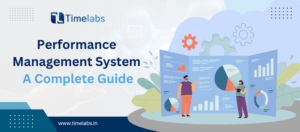Biometric time and attendance systems are becoming popular in the business world. Organizations from small to big are using advanced biometric systems to record and manage employees’ clock-in, clock-out, leaves, and many other things. The biggest advantage of these systems is that they don’t allow employees to clock in for one another. This is very common with manual attendance tracking processes and punch cards.
Benefits of biometric systems:
• They are very easy to install and use. • They help save HR’s time in calculating attendance and payroll through manual methods. • It is a highly secured and authentic way of monitoring attendance. • Improves productivity by reducing employee absenteeism and time-theft. • Helps organization focus time on more important tasks like team building and sales maximization. • It helps companies achieve positive return-on-investment by eliminating buddy punching, employee time-theft, and several other loopholes in manual attendance methods. • Helps note employee’s overtime. Most of the employees who work extra hours are demotivated if their work is not noticed. A biometric system automatically notes their total working hours for the day and month. It helps in calculating pay for the extra hours worked.
A biometric system is one of the safest ways to record employee attendance. It cannot be hacked by any external entity. It only stores employees’ fingerprints and ID numbers. No other personal information like mobile number, address, PAN details, etc. are stored.
How does a biometric system work?
Biometric systems installed in organizations mostly use fingerprint to identify employees. Organizations that deal with a crucial set of information and data use more than one biometric verification. Biometric devices are also used to manage access, entrance control, face reading, RFID readers, and locking doors to prevent unauthorized access.
When a new employee joins, the HR enrolls him/her in the biometric system. Once the unique fingerprint is stored in the database, the employee can start marking attendance through it. The biometric scanner takes an image of the fingerprint and saves it in a biometric encrypt key. This binary information is then used to verify all future logins of the employee. This method works on image-based technology.
A biometric system powered by capacitive technology uses electronic pulses on the touchscreen to verify fingerprints.
Biometric software is also available as mobile applications. This is highly beneficial for remote workers. They can use the application to mark-in and out. They can also keep a track of their timesheet, leave balances, upcoming holidays, and more through the application. Organizations can track remote workers’ time and ensure that they are not misusing the facility given to them.
A good biometric attendance system can be integrated with the payroll system of your company. This means it can help in payroll processing, statutory reporting, and payslip generation.
Final thoughts
Biometric time and attendance system offer convenient & secure attendance management to organizations. They eliminate the need for passwords, badges, punch cards, etc. This saves a lot of time for the management and the employees as well. Employees can get to work without worrying about forgetting their punch cards. While large corporations are already using these systems to manage employee attendance, small organizations to are slowly realizing the cost efficiencies of a biometric system.



